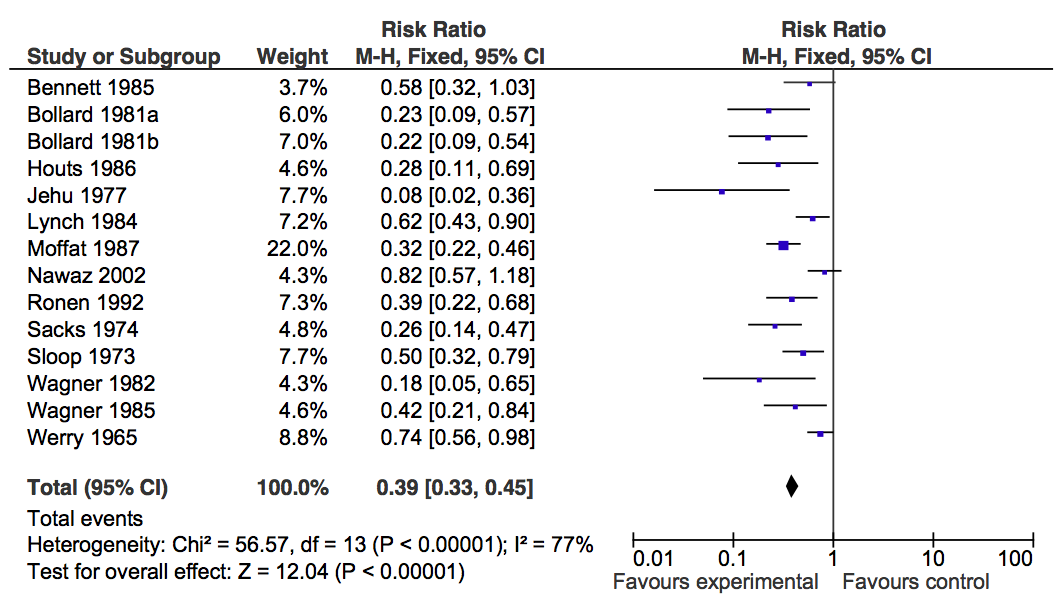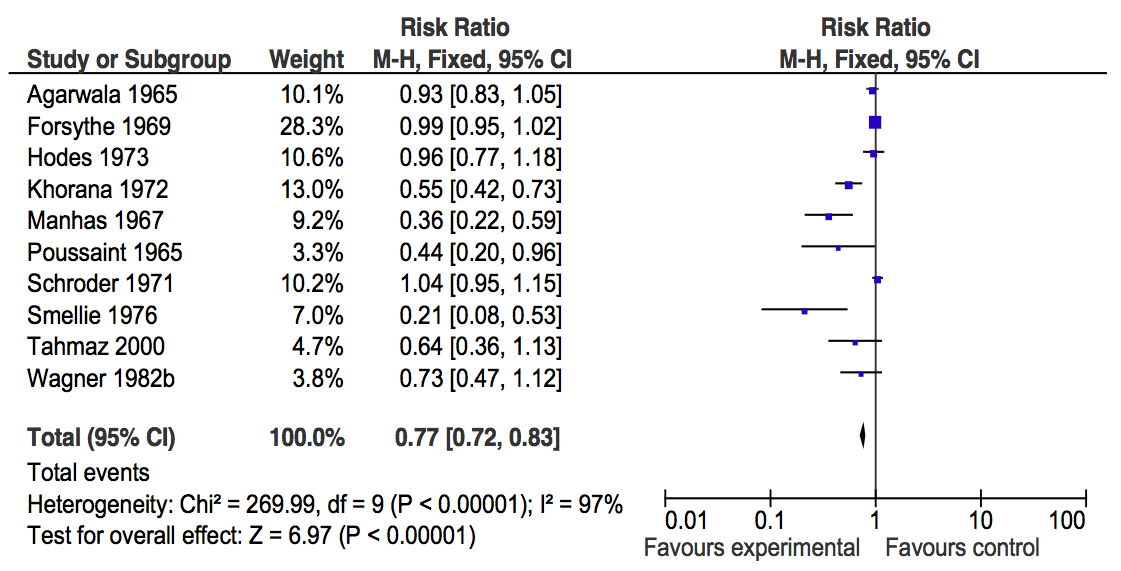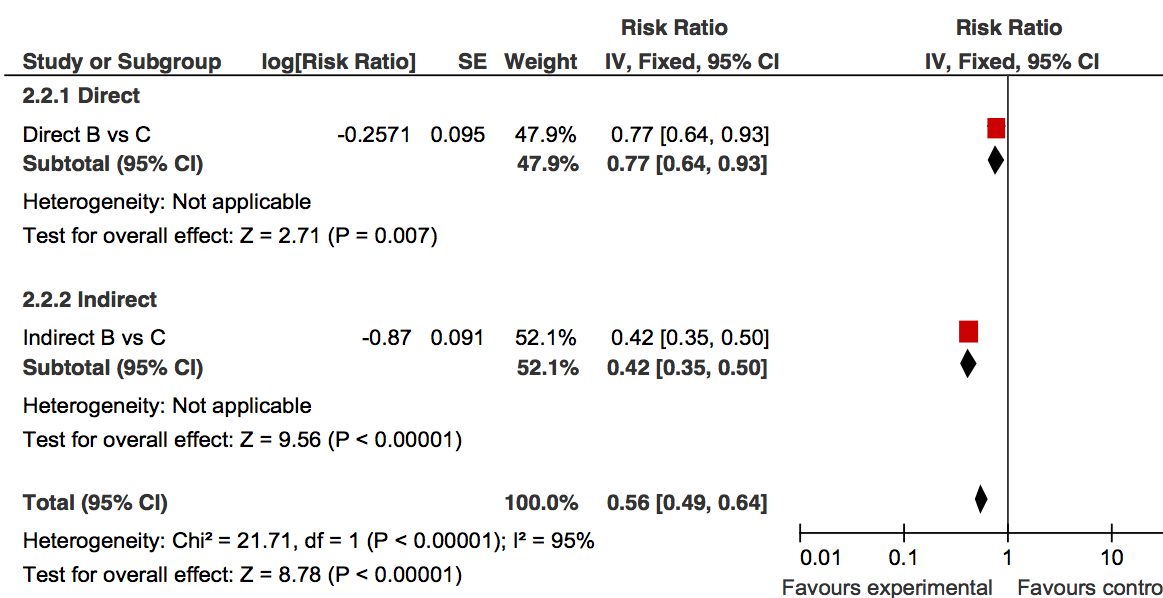I would like to compare 3 different treatments (no one treatment is considered the placebo, and these are not randomized control trials) from multiple studies in a meta-analysis. I am using the software called "Review Manager" from the Cochrane society, and I am wondering if what I am doing is correct or not:
Say A, B, and C are the different treatments. I make the direct comparisons A vs. B, A vs. C, and B and C to obtain the odds ratios, confidence intervals, Z scores, p values, etc. Then I use the results from A vs. B and A vs. C to calculate the indirect comparison for B vs. C, obtaining the odds ratio and SE.
A vs. B Ignore where it says risk ratio, the studies that I will be looking at are all retrospective.
Ignore where it says risk ratio, the studies that I will be looking at are all retrospective.
A vs. C Ignore where it says risk ratio, the studies that I will be looking at are all retrospective.
Ignore where it says risk ratio, the studies that I will be looking at are all retrospective.
I make another analysis with both direct and indirect B vs. C on Review Manager to obtain the odds ratio and statistics for this.
Direct and Indirect B vs. C
 Ignore where it says risk ratio, the studies that I will be looking at are all retrospective.
Ignore where it says risk ratio, the studies that I will be looking at are all retrospective.
Indirect B vs. C was determined using:

L or l = log
Please tell me if I am doing this correctly, and whether if this is valid.
If so, how would I report the results from the analysis between the direct and indirect B vs. C? This would be telling me whether if the difference between B and C is significant?
How would I report the overall findings comparing the 3 different treatments?
Thanks for the help!
